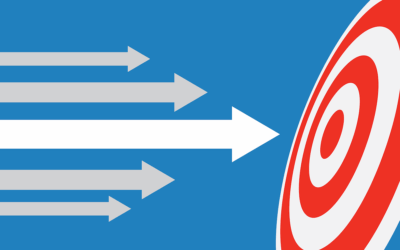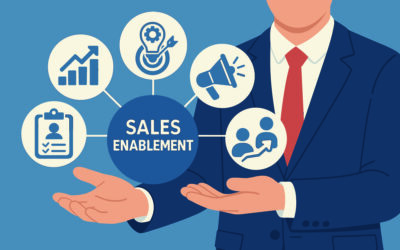As a sales leader, you know training isn’t a one-and-done activity. It’s an ongoing investment that directly impacts your team’s performance and your organization’s bottom line. But with limited time and resources, the question isn’t whether to train your sales professionals, but how often to focus on each critical area.
The answer isn’t the same for every type of training, and understanding these differences can transform your team’s effectiveness. The investment in consistent, well-timed training will pay dividends in improved performance, higher retention, and ultimately, better results.
There are three main types of sales training: sales process, sales skills, and product knowledge. This post explains the value of each and how often to train on them.
Sales Process Training: Reinforce the Foundation
Train your sellers on your sales process quarterly with formal sessions, supplemented by monthly check-ins and real-time sales coaching.
Your sales process is the backbone of consistent performance, but it’s also where bad habits can creep in. Without regular reinforcement, even your best performers start taking shortcuts or reverting to old methods that feel comfortable but may not be optimal.
Quarterly formal training sessions allow you to address process drift, introduce refinements based on market feedback, and ensure new team members are fully integrated into your methodology.
The monthly check-ins serve a different purpose—they’re your early warning system. Use these shorter sessions to identify where individual sellers are struggling with specific process steps and then provide targeted coaching. This prevents small issues from becoming major performance problems.
Consider coinciding process training with your quarterly business reviews. This allows you to correlate process adherence with actual results, making the training more relevant and impactful.
Sales Skills Training: Develop Essential Capabilities
Sales skills require the most frequent attention—monthly formal training sessions with weekly practice opportunities. Unlike processes, which can become routine, skills require continuous development and refinement.
Sales training programs such as IMPACT Selling® give sellers the skills and confidence to succeed in any selling situation.
Think of sales skills training like athletic training. A professional athlete doesn’t practice their fundamentals once a quarter and expect to maintain peak performance. Your sales team needs the same consistent skill development. Monthly sessions should rotate focus areas: one month on discovery questioning techniques, the next on objection handling, followed by closing skills, then presentation techniques.
The weekly practice component is crucial. This doesn’t mean another meeting—it means creating opportunities for peer-to-peer role-playing, manager ride-alongs with immediate feedback, or structured practice during team calls. Skills atrophy without use, and complex skills like consultative selling require repetition to maintain proficiency.
A particularly effective approach is the “skill of the month” model, where you deep-dive into one specific competency for four weeks. This allows for introduction, practice, refinement, and mastery before moving to the next skill area.
Product and Service Training: Keep Sellers Up to Date
Product training frequency depends on your business model, but many organizations need formal sessions every six months, with immediate updates for significant changes. This is less frequent than skills or process training because of the subject matter.
Product information is factual and specific, making it easier to retain once learned properly. It’s also the area where accuracy is non-negotiable. A sales professional who misunderstands your pricing model or misrepresents product capabilities can damage customer relationships and create legal issues.
The six-month cadence works well because it aligns with many companies’ product development cycles and won’t overwhelm your team. However, this schedule assumes you have a system for immediate updates when changes occur. New features, pricing adjustments, or competitive shifts can’t wait for the next scheduled training session.
Create a system for critical product updates. This might include brief videos, updated battle cards, or quick team calls. The goal is ensuring your team never sells with outdated information, while reserving the comprehensive sessions for deeper strategic education.
Maximizing Your Sales Training Investment
The best training approach combines elements from all three areas. For example, a monthly skills session might use your current sales process as the framework and incorporate new product positioning as the content for practice scenarios.
Other ideas to maximize your training investment include:
- Create a learning calendar that maps all training activities across the year.
- Use your CRM data to identify which training areas need attention based on performance metrics.
- Implement peer teaching and ask your top performers to share insights with colleagues.
- Reinforce learning for each type of training with face-to-face and self-paced online practice sessions.
Remember that training frequency is just one piece of the puzzle. The quality of your training content, the relevance to real selling situations, and the follow-up reinforcement all matter as much as timing. Your role as a sales leader isn’t just to schedule training—it’s to create a culture in which continuous learning drives continuous improvement.
By following this framework—quarterly process training, monthly skills development, and bi-annual product education—you’ll create a rhythm that keeps your team sharp without overwhelming their selling time.
Find out how sales training from The Brooks Group can improve performance, retention, and ultimately, results.




